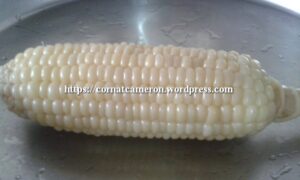Sweet Corn And Diabetes
Can Diabetics Eat Corn On The Cob?
Available throughout the year, sweet corn is a versatile crop that can be eaten both raw and cooked. Roast it, boil it, steam it, this crop can be included in multiple dishes and cremes, enhancing the overall flavor of the dish. Until recently, corn was not considered an important part of our diet and food. Today corn is gaining popularity because of its many health benefits. The trick to including corn in your eating plan is to balance it with sources of protein and fat that can mitigate the effect of carbohydrate-rich foods on blood glucose levels.
Nutrients In Corn
Corn is not only rich in dietary fiber, but in other minerals and vitamins too. Vitamin B3, B5, and C along with manganese are some of its main nutrients. Corn is rich in antioxidants. These benefits are also found in red, purple, or white corn. Carotenoids are found in large quantities and these phytonutrients make corn a much-desired food. Cornmeal made from yellow corn is chock full of goodness with up to 14 times the normal desired range of beta carotenes. The primary antioxidants besides beta carotenes in corn include anthocyanins, lutein, protocatechuic acid, and zeaxanthin. More on calories in corn
Corn is also a great source of dietary fiber with a good ratio of insoluble to soluble fiber. Recent research shows that corn has immense potential to help healthy bacteria grow in our intestines which helps lower the risk of colon cancer. For this to have a sizeable impact, you need to eat over 2 cups of corn in a day. This seems like a lot and scientists are hopeful of identifying the long-term effects of eating some corn every day. Regular ingestion of corn is great for the digestive system. More often than not corn is dropped from diets for diabetes from low-fat diets. Corn, along with being high in fiber and antioxidants, is also high in natural sugar. Corn is categorized as starch and therefore it is only allowed in small portions for diabetics.
For a diabetic, with controlled blood sugar, only a little corn is allowed. This could be by way of some cornmeal or some popcorn or just natural corn on the cob. As this is a rich starch, and usually a high GI food, portions should be strictly controlled. A high GI food is a high glycemic index food. A glycemic index is a way to categorize food depending on how slowly or fast it releases sugar or glucose into the bloodstream. Corn does have a high GI, but its natural sugars, nutrients, and vitamins make it a slightly more preferred food. Corn has also shown that anthocyanins can reduce the risk of kidney damage, a complication that frequently happens in diabetics.
Current medical research says eating corn regularly can help the body develop better blood sugar control. This is still largely unsubstantiated and you should not stop the medication and eat only corn, without checking with your doctor first. Corn is also the main ingredient for High Fructose Corn Syrup HFCS. This is one ingredient most people, not just diabetics, should avoid. HFCS is added to many preserved and packaged food. This syrup is responsible for huge unnatural sugar spikes. HFCS is on the list for many chronic conditions, including diabetes, cardiovascular, obesity, and other lifestyle-related conditions. HFCS should not be a part of the diet for diabetes. There is a good chance you would not be aware that you are consuming HFCS. It becomes important for diabetics to be able to read labels. If you consume too much corn, your body and blood sugar might react in different ways as compared to what you might have heard. You have to know how to prepare it right. Caramelized corn or popcorn with butter might not be the best idea. Steaming corn or grilling it lightly might be a good way to get your dose of corn.
Diabetes
People with diabetes can’t properly process glucose and use it for energy. Instead, their production or use of insulin, the hormone responsible for converting glucose to fuel, is hampered, leading to episodes of extremely high blood sugar levels. A diagnosis of diabetes typically requires a blood glucose level of 200 mg/dL or more during a random test or one over 126 mg/dL after an eight-hour fast. Over 23 million people in the U.S. have diabetes, according to the National Diabetes Information Clearinghouse.
Carbohydrates
Carbohydrates can cause blood sugar to rise, so diabetics typically have to pay close attention to the carbohydrates in their diet. This can be done by counting carbohydrates and limiting the specific amount allowed per meal, by using an exchange system to swap out specific carbohydrate-containing foods with others, or by using the glycemic index, a measure of blood sugar response to specific carbohydrate-containing foods.
Corn
Corn is high in starch, a type of carbohydrate that can quickly raise blood sugar levels. This doesn’t mean that as a diabetic you need to completely forgo corn, however. Corn contains plenty of healthy nutrients, including iron, vitamins A, and B-6, thiamin, riboflavin, niacin, folate, phosphorus, magnesium, manganese, and selenium. It also provides a high level of fiber and is considered a whole-grain food. To properly include corn in a diabetic diet, consume it along with foods containing protein or fat and limit your consumption to one ear of corn or one-half cup of kernels at any given meal.
Considerations
For a healthy change in your diabetic diet, consider adding products containing white corn, a variety grown in Latin America and used to make tortillas, corn chips, and other foods. A 2007 report in the “Journal of the Science of Food and Agriculture” found that blue corn products had a lower hypoglycemic index, less starch, more protein, and more fat than yellow or white corn products. The blue corn also provided anthocyanins, phytochemical compounds that act as antioxidants in the body.



